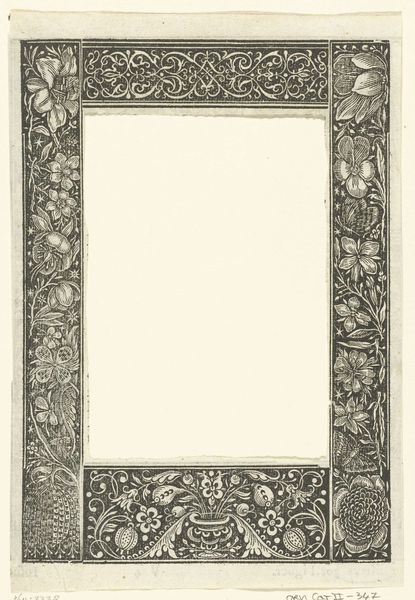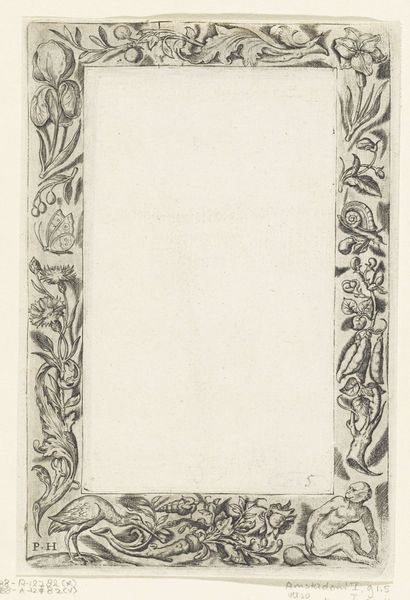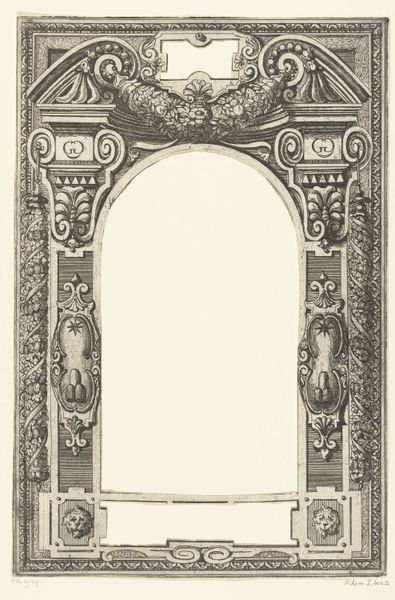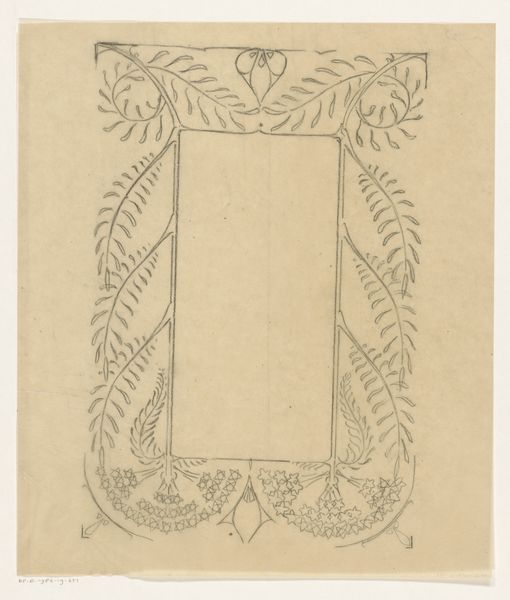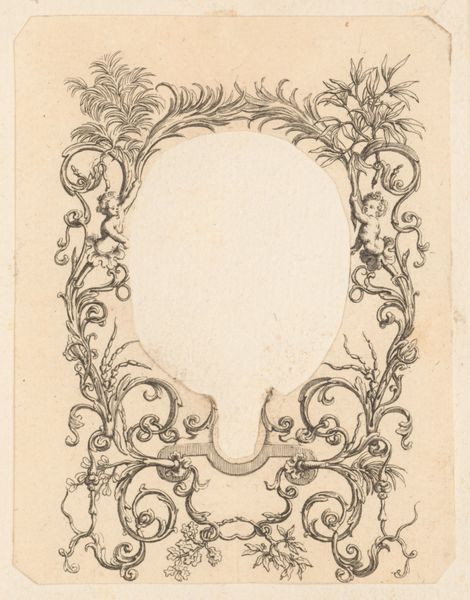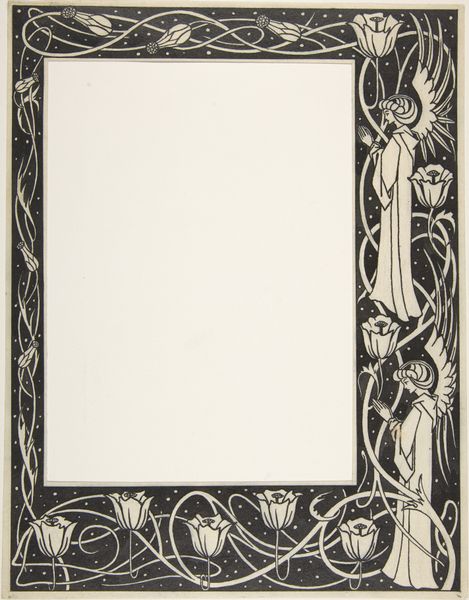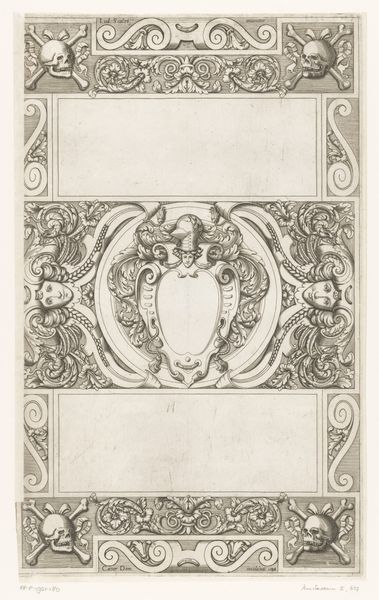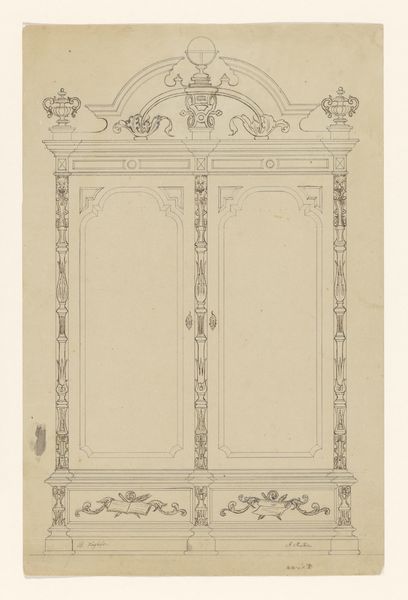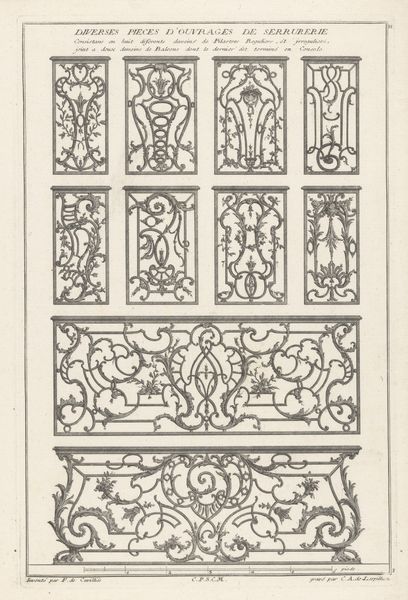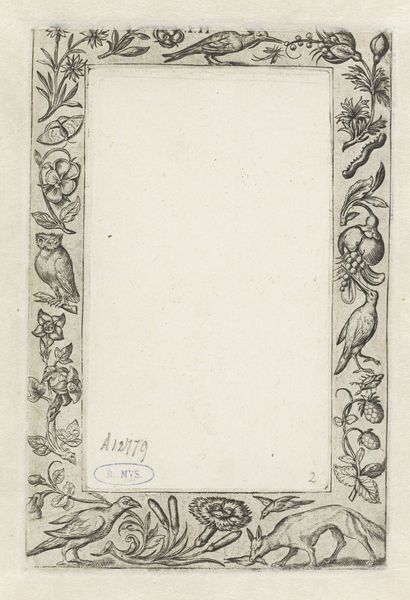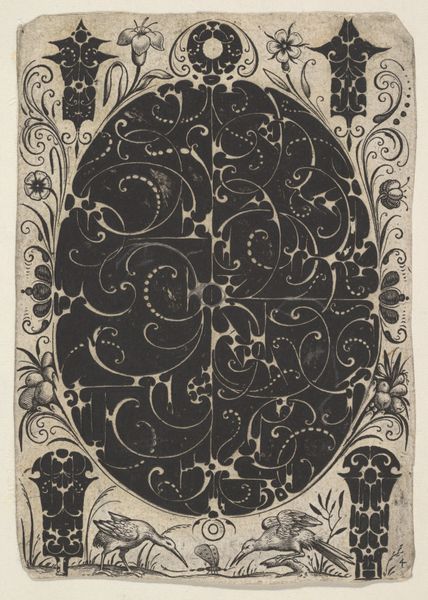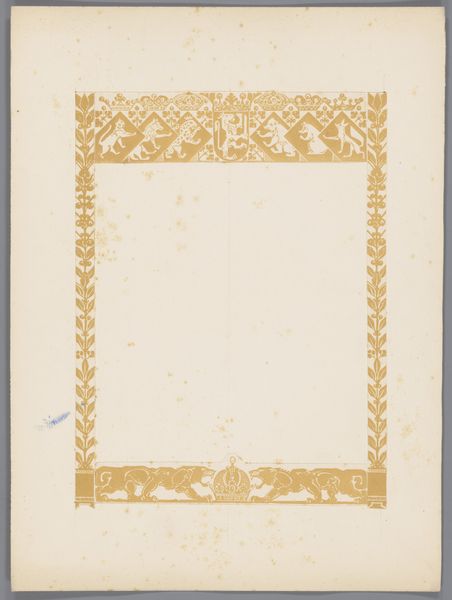
Omlijsting bestaande uit twee verticale panelen en twee friezen 1646 - 1657
0:00
0:00
anonymous
Rijksmuseum
drawing, print, woodcut, engraving
#
drawing
#
pen drawing
# print
#
old engraving style
#
11_renaissance
#
pen-ink sketch
#
woodcut
#
pen and pencil
#
line
#
pen work
#
northern-renaissance
#
engraving
Dimensions: height 160 mm, width 123 mm
Copyright: Rijks Museum: Open Domain
Curator: Here we have "Omlijsting bestaande uit twee verticale panelen en twee friezen," which roughly translates to "Frame consisting of two vertical panels and two friezes." Created between 1646 and 1657 by an anonymous artist, this work resides here in the Rijksmuseum. Editor: It strikes me as quite somber for something intended as a frame. The monochrome palette and dense, intricate detailing almost overwhelm the central space, creating a kind of visual tension. Curator: Yes, these types of decorative borders were hugely popular in the Northern Renaissance. Let’s consider the social function: Prints like this would have been used by artists and artisans to decorate all types of things. You’d paste it into a book, or perhaps use it to inspire decoration on furniture. Editor: Interesting. To me, the border's details are laden with symbols. There are figures enclosed in little architectural niches, flora and fauna – I wonder, are they purely decorative or carrying some hidden meaning? The male figure versus the female figure in a lamp. Are these a symbolic representation of a period ideal about gendered spaces and how people should behave in society? Curator: Likely a combination of both! While individual symbols can have inherent meanings, their deployment is always historically and socially dependent. In a print circulated widely, what messages were these conveying? Editor: The basket of what seems to be overabundant squash at the base hints at ideas about fertility and wealth. But what’s most interesting is thinking about what was supposed to occupy the center. Was it used to frame a biblical quote, a drawing, an announcement of sorts? What does it mean for us to now find the frame without its intended context? Curator: That absence reframes it, doesn’t it? Now we can appreciate it purely as an object that once held power as a marker of taste and status. It brings the question of institutional taste too – the politics of collecting what others discarded or undervalued. Editor: Absolutely. We’re left to grapple with the historical context but also our current gaze. These historical pieces encourage modern discussions around historical gender roles. We can consider what social norms are embedded, literally etched, in these seemingly ornamental things. Curator: Right, it asks us to see these kinds of works not just as decorative items, but artifacts deeply embedded within their time, shaped by forces that reach far beyond simple aesthetics. Editor: Precisely. Examining this engraving lets us delve deeper into the interconnectedness of art, history, and identity, unveiling subtle yet significant perspectives.
Comments
No comments
Be the first to comment and join the conversation on the ultimate creative platform.
